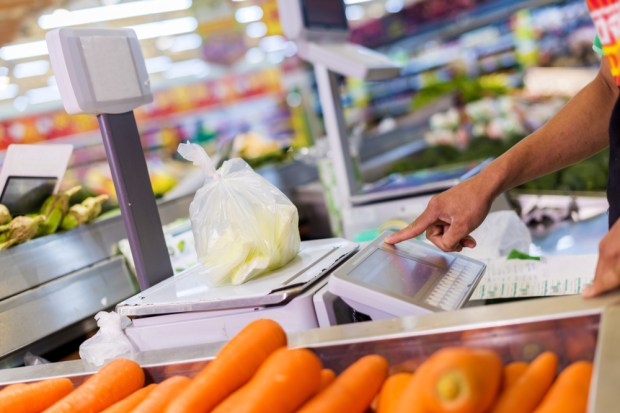US Consumer Price Index Drops To 2008 Level In April

The Consumer Price Index (CPI) fell to its lowest level in a dozen years last month, according to the U.S. Bureau of Labor Statistics (BLS).
The CPI, a measure of the change in the prices of goods and services, dropped 0.8 percent in April on a seasonally adjusted basis. It’s the largest monthly decline since December 2008.
At nearly 21 percent, the decline in the gasoline prices was the largest contributor to the monthly decrease. But the indexes for clothing, motor vehicle insurance, airline fares, and lodging fell sharply as well.
In contrast, the cost of food posted its largest monthly increase since 1974.
The grocery index increased 4.1 percent over the last year. All six major supermarkets food groups saw price hikes, with increases ranging from 0.4 percent for fruits and vegetables to 6.8 percent for meats, poultry, fish and eggs. The index for dairy and related products increased 5.2 percent, and the index for nonalcoholic beverages swelled 5 percent.
The index for food away from home rose 2.8 percent over the last year. The index for limited service meals increased 3.2 percent, and the index for full-service meals rose 2.4 percent over the last year.
The index for all items less food and energy fell 0.4 percent in April, the largest monthly decline in the history of the series, which dates to 1957.
Indexes for used cars and trucks and recreation also declined. The indexes for rent, owners’ equivalent rent, medical care, and household furnishings and operations all increased in April.
The all items index increased 0.3 percent for the 12 months ending in April, the smallest one-year rise since October 2015. The index for all items less food and energy increased 1.4 percent over the last 12 months, its smallest increase since April 2011. The energy index fell 17.7 percent over the last year.
In contrast, the food index rose 3.5 percent over the last 12 months, its largest 12-month increase since February 2012.
The CPIs are based on prices of food, clothing, shelter, fuels, transportation, doctors’ and dentists’ services, drugs, and other goods and services that people buy. Prices are collected each month in 75 cities nationwide from about 6,000 homes and 22,000 department stores, supermarkets, hospitals and gas stations.
